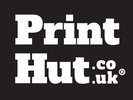Printing can be an expensive business whether you’re designing a poster, a flyer or a business card. So, it’s important to make sure you don’t make any mistakes. Imagine the horror on yours or your client’s face if your design is printed hundreds or thousands of times, only for you to notice a mistake. Here are some of the most common errors to avoid when designing for print…
- Starting too soon
Only start your work when you are completely clear on the brief. Don’t be afraid to ask questions and to ask your client if they have seen any designs that they really like. If you misunderstand what they’re asking for, it could lead to costly mistakes if you have to start again.
- Choosing the wrong colour mode
You may think it looks incredible on screen, and you’re probably right. But, if you’ve chosen the wrong colour mode, the colours you’ve opted for won’t reproduce in print without special inks. RGB (red, green and blue) is a system where light is used to mix colours. You make your colours lighter and more vibrant by adding more light. CMYK (cyan, magenta, yellow and black) uses inks to mix a range of different shades, like mixing colours on an artist’s palette. Forgetting to select CMYK could mean you choose colours which you cannot reproduce in print. When you get your prints back, the colours will look nothing like you imagined.
- Pixelated pictures
While an image may look perfectly fine on screen, if you don’t choose one the right size, it will be pixelated in print. To avoid this, your images need to be at least 300 pixels per inch. Double check that your image is set to a high resolution.
- Too much information
It’s tempting to try to cram as much as possible onto your design. After all, you want your potential customer or reader to get lots of information. But, if you have reduced your text size to fit more words on the page, people will find it off-putting and won’t read it. Make sure your font is 8pt or bigger.
- Font weight
There are exceptions to the 8pt rule. You need to take into account not just size, but font weight too. Helvetic Light, for example, has fine lines, so it may be a struggle to read it even in 8pt. The opposite is true too. If your font has heavy, thick lines, they will run together when printed in a small size, making your text impossible to read.
- Too many fonts
You may think that using lots of different font styles will make your design look interesting. But, actually, it will just make it confusing and hard to read. When it comes to print design, two is usually the magic number.
- White lines
You need to add an area of “bleed” at the edge of your document. The edges of the document are trimmed after printing. So, you need to make your artwork background colour bigger than the page itself so it can be trimmed down to the right size. If you don’t do this, you will end up with a white line at the edge of your print where your design ends.
- Not proofreading
Check, check and check again before you send your design to the printers. Read through what you’ve written and check the spelling. Ask someone you trust to read it for you because your own eye can skim past mistakes, seeing what you think is there rather than what really is.
- Too perfect
While symmetry may work in other situations like interior design, perfect symmetry for print work can be boring. If every single aspect of your design is symmetrical, people will lose interest rather than looking at each of the elements. Try creating a design which has balance and harmony, but which has a less formal feel.
- Not having the end in sight
It’s easy to get caught up in the design process and to start believing that the point of your work is to make it as beautiful as possible. But actually, your design will serve a different purpose depending on what it is. Perhaps it is to encourage potential clients to try a new service, or to alert people that an event is taking place. Make sure you know what your client hopes to achieve and that you deliver it. Otherwise, it won’t matter how pretty your design is.
By knowing what mistakes are often made, you can do your best to avoid them and create a design with is both beautiful and effective.
When you buy with Print Hut, you can rest assured that our dedicated print campaign managers will help you to make sure that you will get exactly what you want from your print order. Why not give us a call and ask how we can help with your print design.
